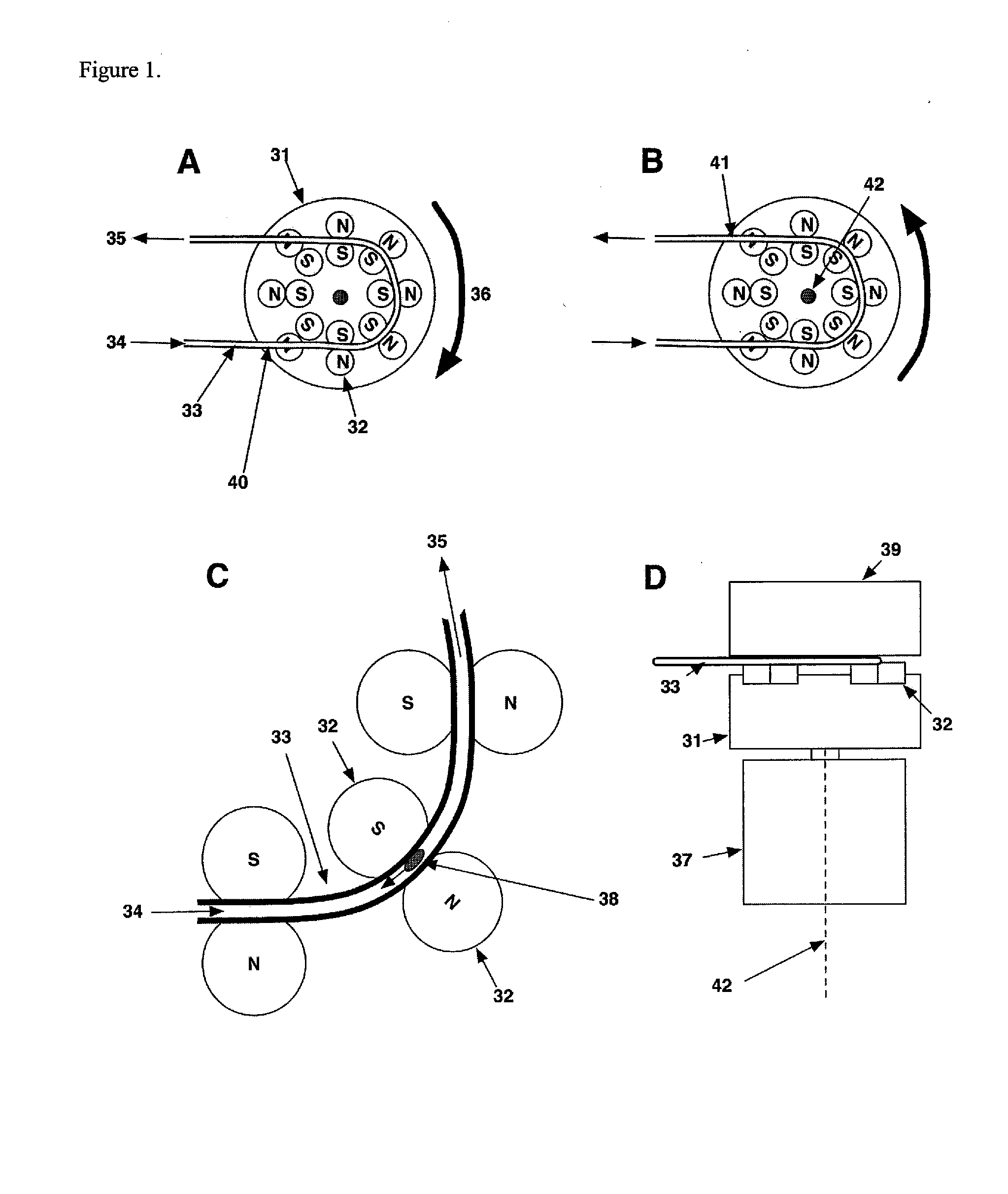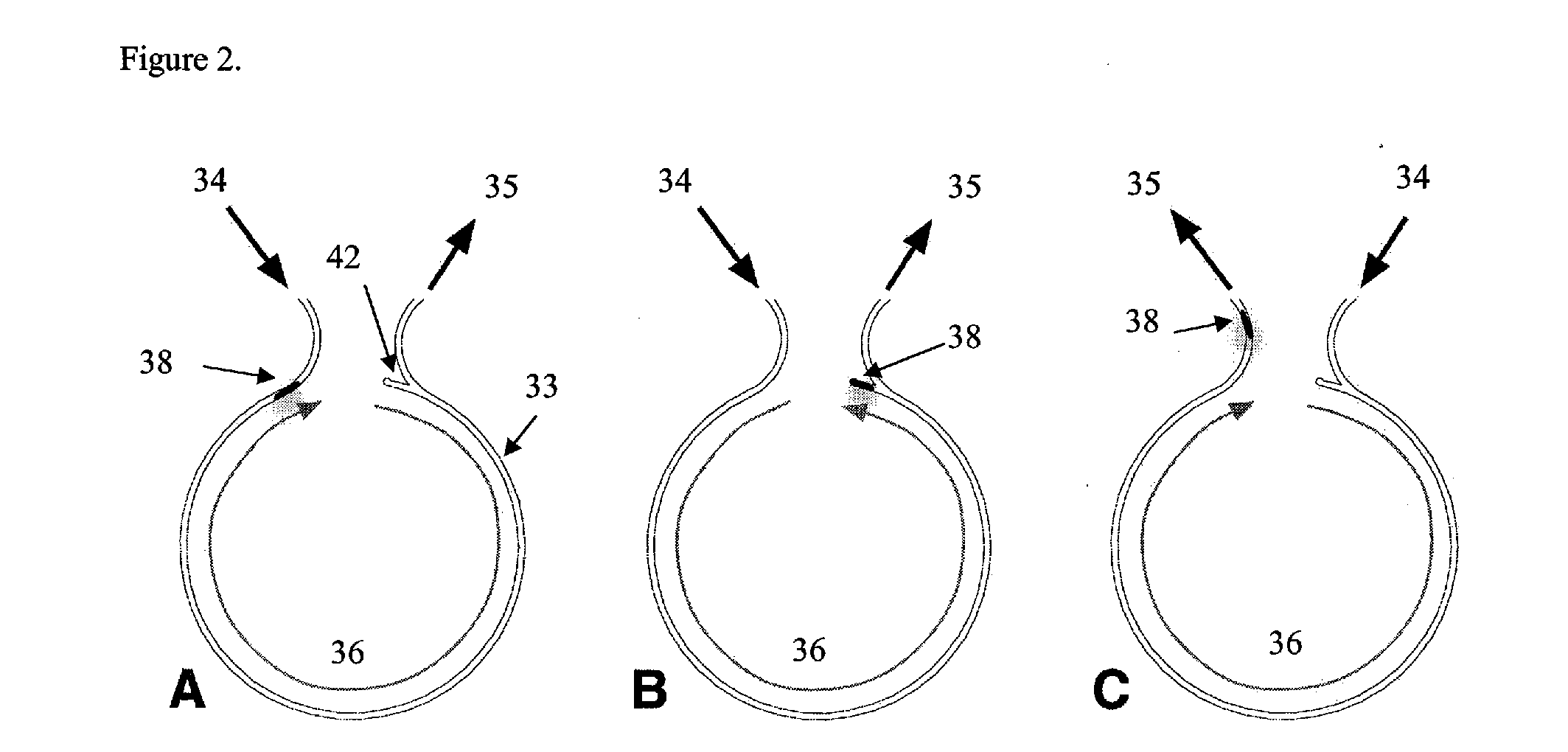Magnetic Bead Trap and Mass Spectrometer Interface
a technology of mass spectrometer and magnet bead trap, which is applied in the direction of separation process, laboratory glassware, centrifuge, etc., can solve the problems of reducing analytical precision and sensitivity, waste of sample peptides, and adsorption mechanism of low abundance peptides, so as to minimize losses on surfaces encountered, the effect of rapid introduction of analytes
- Summary
- Abstract
- Description
- Claims
- Application Information
AI Technical Summary
Benefits of technology
Problems solved by technology
Method used
Image
Examples
examples
[0061]In a first example, a magnetic bead trap was constructed using ¼″ dia× 3 / 16″ thick cylindrical NdFeB magnets (Amazing Magnets, Inc.), pairs of which were held by epoxy glue on the end face of a cylindrical aluminum magnet carrier, which in turn was rotated about its cylinder axis by a reversible motor (a 2 RPM Oriental Motor SMK216A-GN / 2GN30KA Low-Speed Synchronous Motor). The magnet faces were arranged to be approximately co-planar on their upper surface. Direction of motor rotation was controlled by an AC relay, which was in turn was controlled by a solid-state relay controlled by either a contact closure signal from a Spark Holland autosampler auxiliary output under software control, or else by a manual toggle switch. A length of 150 u ID (360 u OD) Teflon capillary tubing (Upchurch Scientific) was configured to follow approximately 240 degrees of a circle of diameter the same as (and co-axial with) the circle of trapping regions (i.e., the circle defined by the contact poi...
PUM
| Property | Measurement | Unit |
|---|---|---|
| diameter | aaaaa | aaaaa |
| diameter | aaaaa | aaaaa |
| volume | aaaaa | aaaaa |
Abstract
Description
Claims
Application Information
 Login to View More
Login to View More - R&D
- Intellectual Property
- Life Sciences
- Materials
- Tech Scout
- Unparalleled Data Quality
- Higher Quality Content
- 60% Fewer Hallucinations
Browse by: Latest US Patents, China's latest patents, Technical Efficacy Thesaurus, Application Domain, Technology Topic, Popular Technical Reports.
© 2025 PatSnap. All rights reserved.Legal|Privacy policy|Modern Slavery Act Transparency Statement|Sitemap|About US| Contact US: help@patsnap.com



